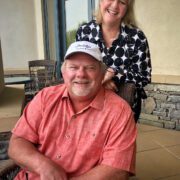A Conversation with Anthony Lyons, CRA Director
Recently, the Community Redevelopment Agency (CRA) has undergone a series of changes to allow for further efficient use of the agency’s financial and human resources. A clear example includes clearly defining its strategy to focus on the economic drivers for each of the areas it serves as well as ways to then connect them.
Redevelopment
The CRA has an unwavering mission to invest in and catalyze private investment into its four redevelopment areas; Eastside, Fifth Avenue/Pleasant Street, Downtown and College Park/University Heights. These are all areas that need investment, jobs and more options for retail.
Currently, it is focusing its efforts on the redevelopment of Seminary Lane, Innovation Square, the Power District/Depot Park, the Plaza, and the Gainesville Technology Enterprise Center (GTEC), as well as the area around it, including the former Kennedy Homes site. Those sites, plus the connections between them, will allow for the spin-off effect of each to produce a whole community, rather than isolated areas.
“Our job is to look at the good in each area we serve and to create something even when little investment exists,” said Lyons.
He points out that if we were to review the areas that have been helped by the CRA, we would see that the agency has worked closely with neighbors and organizations to prove that Gainesville is really the top flight city we all know and enjoy.
“[We will] continue to place us on the map of the best of the best,” Lyons said. “We will simply not stop until all areas in the urban core are served and helped with the needed investment to succeed.”
Resources
To achieve maximum redevelopment potential, the CRA is dedicated to increasing the efficiency of how it allocates resources. To illustrate this efficient use of funds, Lyons said that the CRA has spent 88 cents of every dollar on designing and constructing projects. What this translates to is that 96% was spent on small businesses, 100 were local and a further 17% were diverse “We are proud but can still improve,” said Lyons.
According to Lyons, another way that the agency will increase efficiency is to interface with its vendors in a new way.
“We are going to move much of our purchasing to an online system, which will lessen the need for additional staff and cut down the time to oversee this piece of our business,” he said. “More importantly, this will allow easier access for diverse/ local businesses to provide services to us.”
Management
Lyons is working on creating a mode of efficiency that utilizes the talents of each employee in the best way possible. In a typical agency, each employee would be assigned a specific duty to perform. An accountant, for example, would only perform the functions related to that one job. While this may work in some cases, doing this can present two problems: one, it causes funds to be allocated for a full-time position that, in reality, is a part-time job, and two, it sets up a system whereby there are automatic silos within the agency.
“We are doing the opposite,” said Lyons. “We are moving toward a complete team approach.”
According to Lyons, duty-driven job descriptions will be eliminated and instead there will be generic titles with the built-in flexibility that enables employees to perform tasks that are consistent with their experience. More importantly, assignments will be made ahead of time to reflect what work actually needs to be done.
This will allow for the staff to “plug and play” in any project at any time any year, leading to total flexibility.
Motivation
“What I think, and what we try to employ, is an environment whereby each employee is valued for his or her talent and background,” Lyons said. “We help employees achieve success for themselves, for the CRA and for the city.”
Regardless of experience and title, each individual is required to think thoroughly, be creative, be innovative, learn, teach and – most important to Lyons – change the city for the better.
At the end of the day, Lyons believes that if there is a team environment that is successful and award winning, it breeds a culture of innovation and success.
The CRA’s culture of a family and team atmosphere is important. Simultaneously, it is also a competitive environment, where all strive to design and build very successful projects.
As Lyons proudly states, “Success breeds success.”


